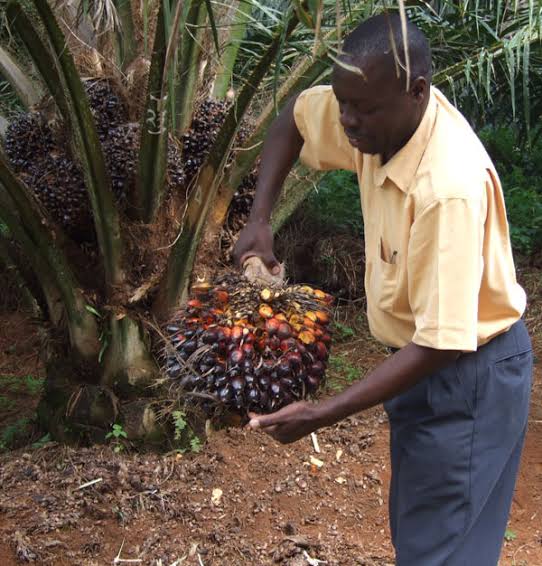By Peter Wamboga-Mugirya
“Did you know oil-palm making Malaysia’s economy tick originated from Africa?”
Did you know that oil palm which today is one of Malaysia’s key sectors of the economy, originated from Africa, to be specific, from Nigeria? Oil palm trees were introduced to what was known as British Malaya by the United Kingdom’s colonial government in early 1870s as ornamental plants from Eastern Region and the Oil River State (then Protectorate) in Nigeria.
First commercial oil palm (Elaeis guineensis Jacq.) cultivation in Malaysia was in Selangor in 1917 at Tennamaran Estate [over 100 years ago]. At this time [2021], when Uganda is planning the construction of her crude oil pipeline [the East Africa Crude Oil Pipeline (EACOP)] by 2022 and then extracting her first crude oil out of the ground by 2025 — the country has another type of equally lucrative but sustainable oil — the one extracted from palm-nuts. This is another big global business worth US$ 92.84 billion in 2021, according to the latest report by the New York-based Zion Market Research (ZMR).
“Indeed oil palm, the one involving growing/production of palm nuts in the field, and palm oil, which means post-field/harvest production/products, are big-money commodities and lucrative businesses that Uganda should whole-heartedly embrace,” agrees Project Manager, National Oil Palm Project (NOPP) of Uganda in the Ministry of Agriculture, Animal Industry and Fisheries (MAAIF), Ms. Connie Magomu Masaba. And it is true. Some regions of the world, not original homes to this powerful tropical plant like Malaysia, are minting millions of dollars and millions of jobs, both of which Uganda badly needs and wants.
Gov’t of Uganda and IFAD funding
In 2019, the International Fund for Agricultural Development (IFAD) agreed with the Government of Uganda through the Finance and Agriculture ministries, to support the extension of oil palm growing from Kalangala (in Ssese Islands in Lake Victoria) to several other districts in Uganda, at the tune of US$210 million (about Shs767 billion — the exchange rate at the time of signing).
An agreement to this effect was signed between the Government and IFAD at the IFAD headquarters in Rome – Italy in November 2019. The districts to benefit from oil palm growing include Buvuma, Mayuge, Masaka and Kyotera as resources and land are earmarked for the expansion of the project to Buikwe and Mukono districts.
According to information from NOPP, currently, work kicked off in Buvuma on the establishment of oil palm gardens covering up to 3,500 hectares of land. Also, a private operator, Buvuma Oil Palm Uganda Limited (BOPUL), is set to process crude oil from the oil palm fruits in the area when they mature four years later. The company is a subsidiary of Oil Palm Uganda Limited (OPUL) and BIDCO Uganda Limited. The government, on behalf of the people of Buvuma, will have a 10 per cent shareholding in the company.
Connie Magomu Masaba says: “Government of Uganda has appreciated oil palm as a viable socio-economic intervention in climatically-suitable areas of the country, such as the islands of Kalangala. The Project will be implemented in the mainland areas along Lake Victoria and surrounding the two island districts of Kalangala and Buvuma, but also areas in the western (Bundibugyo, Masindi) and north-western (Arua) parts of the country.”
The case of Malaysia
In Malaysia, the 1Malaysia Biomass Alternative Strategy (1MBAS), the country will create more than 66,000 new jobs and increase the industry’s contribution to Malaysia’s Gross National Income (GNI) by RM 30 billion (US$9.5 billion). “This reflects the extent to which every Malaysian benefits from the palm oil industry’s growth and profitability. Through employment and development, downstream industries and tax receipts, the Malaysian palm oil industry has benefitted everyone in Malaysia. Meanwhile, palm oil exports, which benefit Malaysia financially, provide a vital vegetable oil to the rich and poor alike throughout the world,” states Malaysia Palm Oil Board (MPOB).
Growing global demand for edible oils and animal proteins in the last decade or two had resulted in a tremendous increase in the areas under oil crops cultivation, particularly of soybean and oil palm. In the last six years, the four main soybean growing countries comprising Brazil, Argentina, Bolivia and Paraguay recorded a 92% increase in production and 66% increase in planted area.
World production of palm oil, the most widely traded edible oil, has also seen significant leaps in production and planted areas; production had almost doubled from 1990 to 2001, with Malaysia and Indonesia contributing to most of the increased production.
In 2020, Malaysia accounted for 25.8% and 34.3% of world’s palm oil production and exports, respectively. If taken into account of other oils & fats produced in the country, Malaysia accounted for 9.1% and 19.7% of the world’s total production and exports of oils and fats in the same year. The refining of crude palm oil commenced in the early 70s in response to Government’s call for increased industrialization. The emergence of refineries marked the introduction of a wide range of processed palm oil products.
Highest Yielding and Lowest Land Use
The oil palm is a perennial crop. It starts yielding fruits for oil about 3-4 years after planting. It has a continual productive lifespan of 25-30 years. Furthermore, with total yield of about 4.5t (4t palm oil and 0.5t palm kernel oil) per hectare, it is the most productive oil crop in the world, being 10 times more productive than soy bean, which produces only about 0.45t of oil per hectare.
This means that to produce the same volume of oil, oil palm will only need one-tenth of the area required by soya-bean. This is an important consideration when comes to land expansion for oilseeds cultivation, production efficiency and consistent supply of edible oils to feed the increasing world population.
Do you have a story in your community or an opinion to share with us: Email us at editorial@watchdoguganda.com












